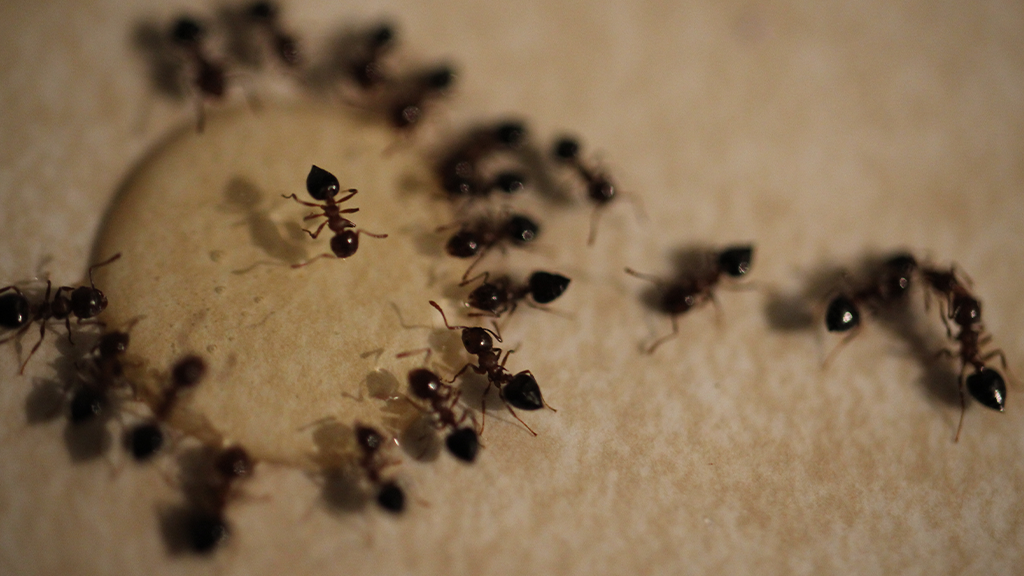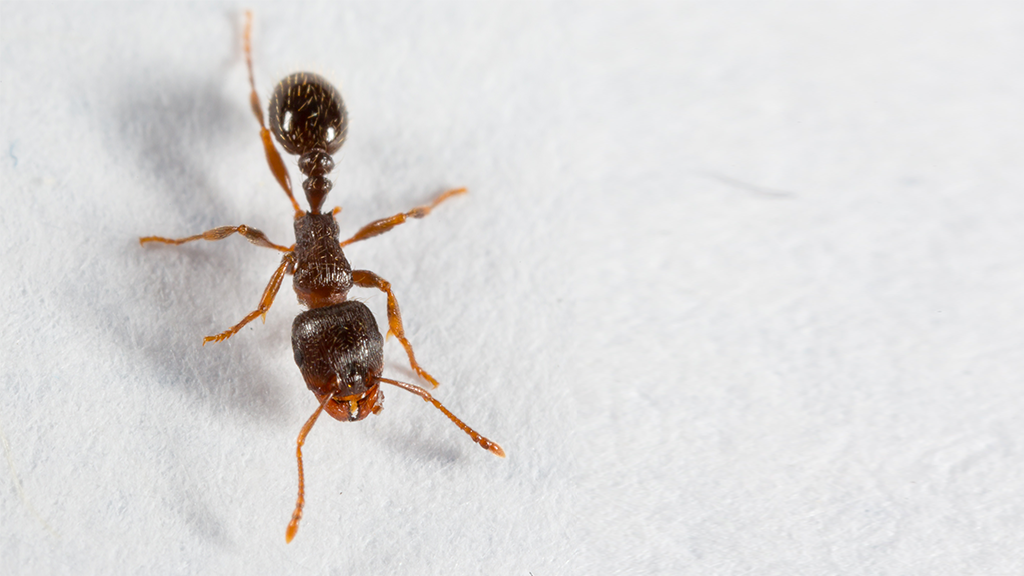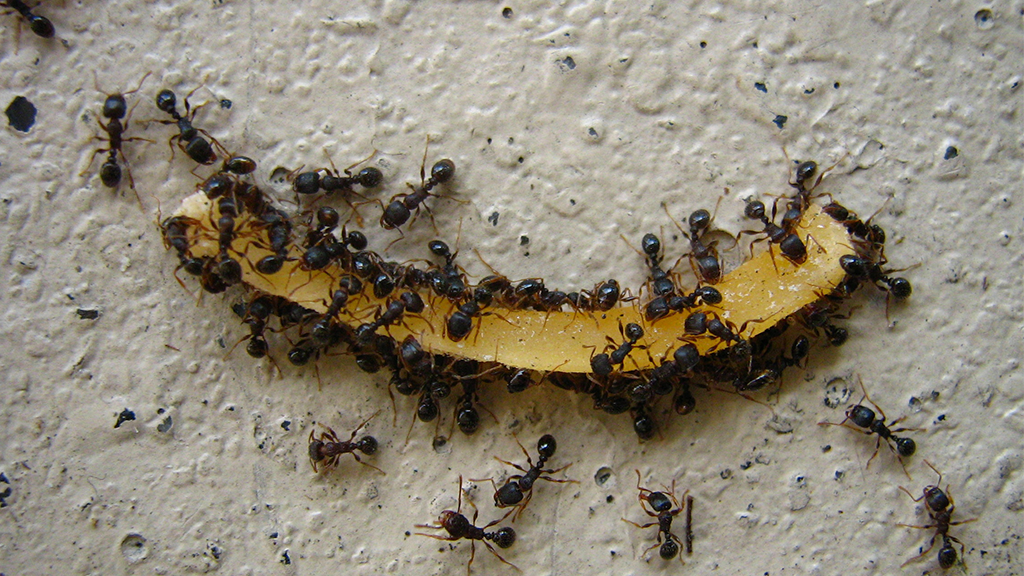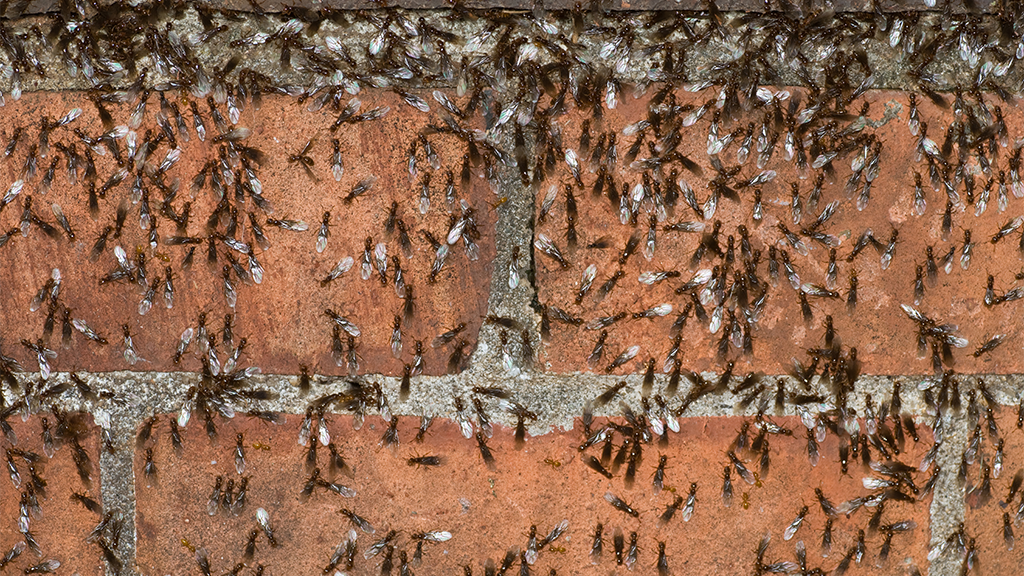ANT MONTH: All About… Pavement Ants
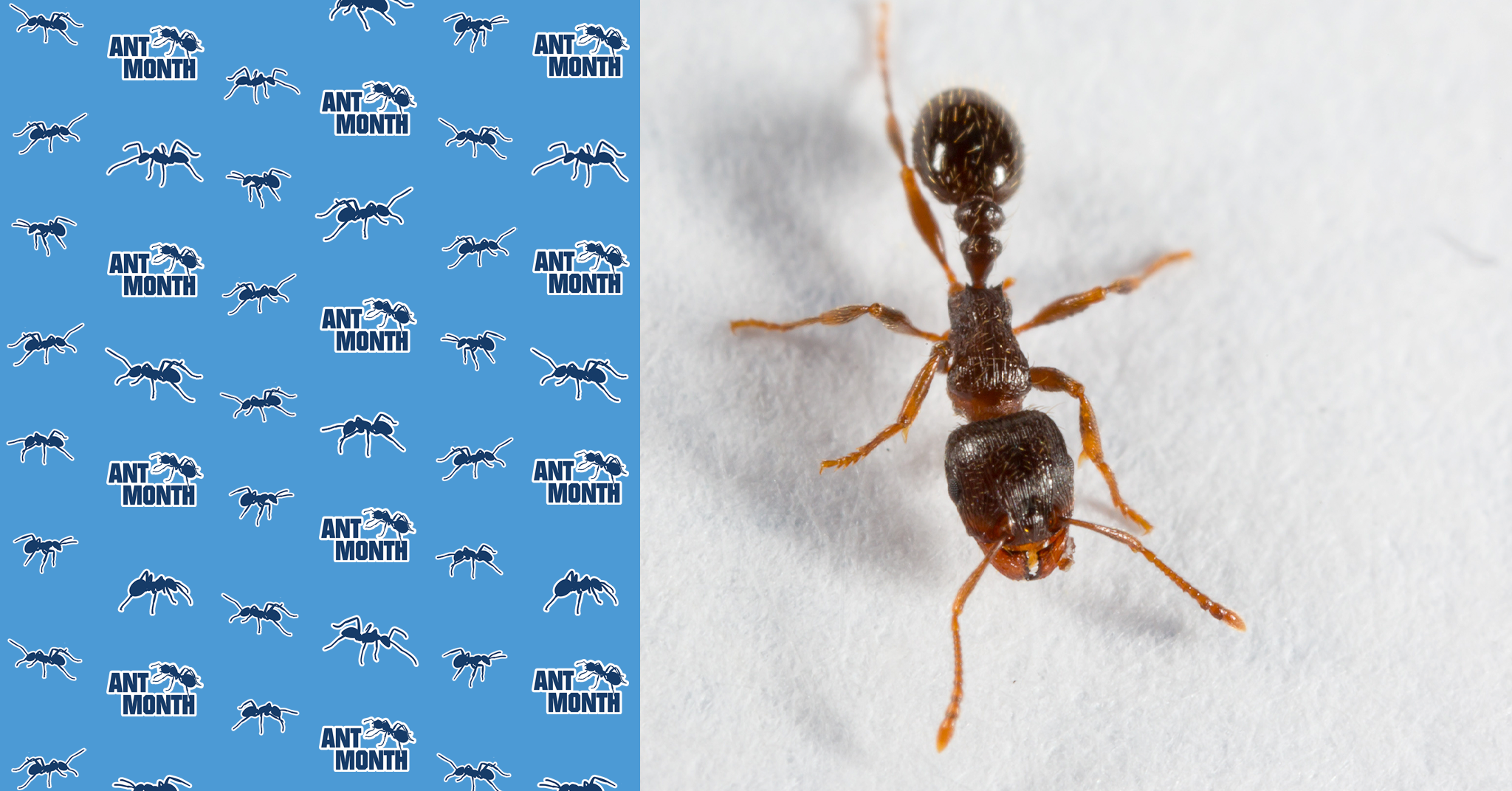
Our final Ant Month feature is here, and rounding out our species spotlights—after odorous house ants, fire ants, and Argentine ants—is the one we’re most likely to run into during a neighborhood stroll: the pavement ant.
WHAT ARE PAVEMENT ANTS?
Larger than many other ant species (yet still quite small), these pervasive ants earned their name from their notable nesting habits; they typically build their colonies near or beneath driveways, sidewalks, paved paths, large rocks, walkways, and even under structural foundations. It’s not uncommon to spot a large congregation of pavement ants in sidewalk cracks or on the edges of your patio—these ants prefer to nest underground in areas with less-abundant foliage.
Like odorous house ants, these ants are commonly referred to as “sugar ants” due to their marked sweet tooth, but don’t get these two confused. Pavement ants have more than a few defining characteristics important for identification and control.
WHAT DO THEY LOOK LIKE?
Pavement ant workers are typically between 1/8 to 3/16 inches long, and workers in each colony will look indistinguishable from one another. Their dark brown, nearly-black bodies feature segmented, elbowed antennae with a small club at the end, as well as tiny hairs on their head, thorax, and abdomen. Their petiole, or waist, has two distinct nodes visible from both the top and from the side.
Pavement ants are highly sociable and nearly always in groups. Many pavement ants can be spotted together trailing back and forth from food sources; gathering near their small, mounded nest entrances; and swarming near a melted popsicle or spilled snack. During late spring and early summer as pavement ants expand their colonies, competing colonies engage in aggressive “sidewalk wars” battling for territory, often leaving thousands deceased.
WHAT DO PAVEMENT ANTS EAT?
Given the choice, pavement ants will choose sweet treats more often than not. Like other ant species, they have their sights set on honeydew, the sticky secretion left in the wake of plant munching insects like aphids. Foraging ants recruit fellow workers to bite off bits of fruits, greasy foods, processed grains, pet foods, meats, insects, and seeds.
Pavement ants are also known to snack on a variety of scraps, forage inside garbage cans, and, since they are a warm-weather loving species, they’re ones likely to crawl all over the potato salad at your picnic or outdoor barbecue.
Like Argentine ants, their presence is threatening to your lawn and garden because of their motivation to keep plant-loving, leaf-damaging insects safe from predators to keep their honeydew supply flowing.
WHERE ARE THESE ANTS COMING FROM?
Pavement ants originated in Europe and likely hitchhiked to the United States during the 1700s on cargo ships within the soil used to provide ballast. They’re one of the most commonly encountered ants nationwide, and their moderately sized colonies are typically made up of 10,000 ants or more.
Pavement ants have adapted to a variety of living conditions, from concrete apartment buildings to rustic rural porches. Outdoors, their nests can be made nearly anywhere there is a juxtaposition of soil or dirt and large stones, concrete slabs, or large objects to house their underground nests. Pavement ants can even nest within foundation cracks, gaps in concrete steps, or underneath potted plants.
Their tendency to nest in close proximity to structures and homes means indoor infestations are a common occurrence. A colony of these pesky ants residing in your home’s foundation can find their way inside to forage for food sources. They’re especially likely to voyage into structures during cold weather in search of warmth and moisture. Pavement ants can march along electrical wires, near pipes, and inside walls, sometimes even relocating to these locations entirely.
HOW DO I GET RID OF PAVEMENT ANTS?
Pavement ants are a highly social ant species. Where there’s one pavement ant, there are thousands more—and the rest are almost certainly on their way. Stop pavement ants in their tracks before they set up shop in your home with these tips.
PACK THE SNACKS
Poorly stored food, unkempt corners, and unplanned spills are a pavement ant worker’s dream. Any food left accessible (even garbage, leftover breakfast crumbs, and that half-eaten bowl of Fido’s food) will draw in dozens of foraging pavement ants before you know it. These ants work swiftly to collect morsels of appealing food to take back to their nests, so even recent grocery store hauls are subject to infestation if improperly stored. Use airtight containers to store dried goods, clean up any drips on jars, only feed your pets what they can finish at one time, and promptly attend to any unswept crumbs before they become ant food.
GRAB THE BAIT
Use pavement ant’s cooperative nature to your advantage and grab some ant bait. Both sweet baits and protein-based baits can be highly attractive to pavement ants. In some cases, bait placed near observed ant activity (along with a healthy dose of patience and perseverance) can wipe out an entire colony. Effectively placed bait most often staves off larger infestations, and in conjunction with other methods works to reduce pavement ant populations to more manageable levels. Always follow the instructions on the product’s label for properly placing baits.
WIPE OUT SCENT TRAILS
Pavement ants, like other species, leave invisible scent trails to map routes for foraging worker ants toward reliable food sources and back to their nests. Without these pheromone trails, ant activity slows, or often halts, until new trails can be formed by foraging scouts searching for meals. If established ant trails plague your kitchen counters, grab some deodorizing cleaner and wipe out the scent trails to discourage workers from marching on the paths established in less than desirable places.
MAKE SOME REPAIRS
Pavement ants can sneak inside through surprisingly small cracks. Block off their access by filling holes, repairing gaps, and locating any vulnerable or weak spots around doors and windows. Many of these potential entryways can be sealed off with caulking and sealant, while other spots, like foundation cracks, may need a little more elbow grease to seal up.

BRING BACKUP
Dealing with an ant infestation is not anyone’s idea of a good time, so sometimes it’s best to hand it off to the pros. Not only can pest control professionals quickly identify and safely treat ant infestations, they can also prepare your home and garden for future infestations and provide continual pest control support, for pavement ants and more. Save yourself some time and guesswork by picking up the phone and bringing in one of our trained experts to tackle your ant problems for you.
That’s it for our Ant Month series! Catch up with our spotlights on all four ant species (odorous house ants, fire ants, and Argentine ants), and if you’ve seen the signs of ant activity—or want to prevent pest problems from cropping up—a Moxie Pest Control professional will be happy to help with any pest issues large or small.

